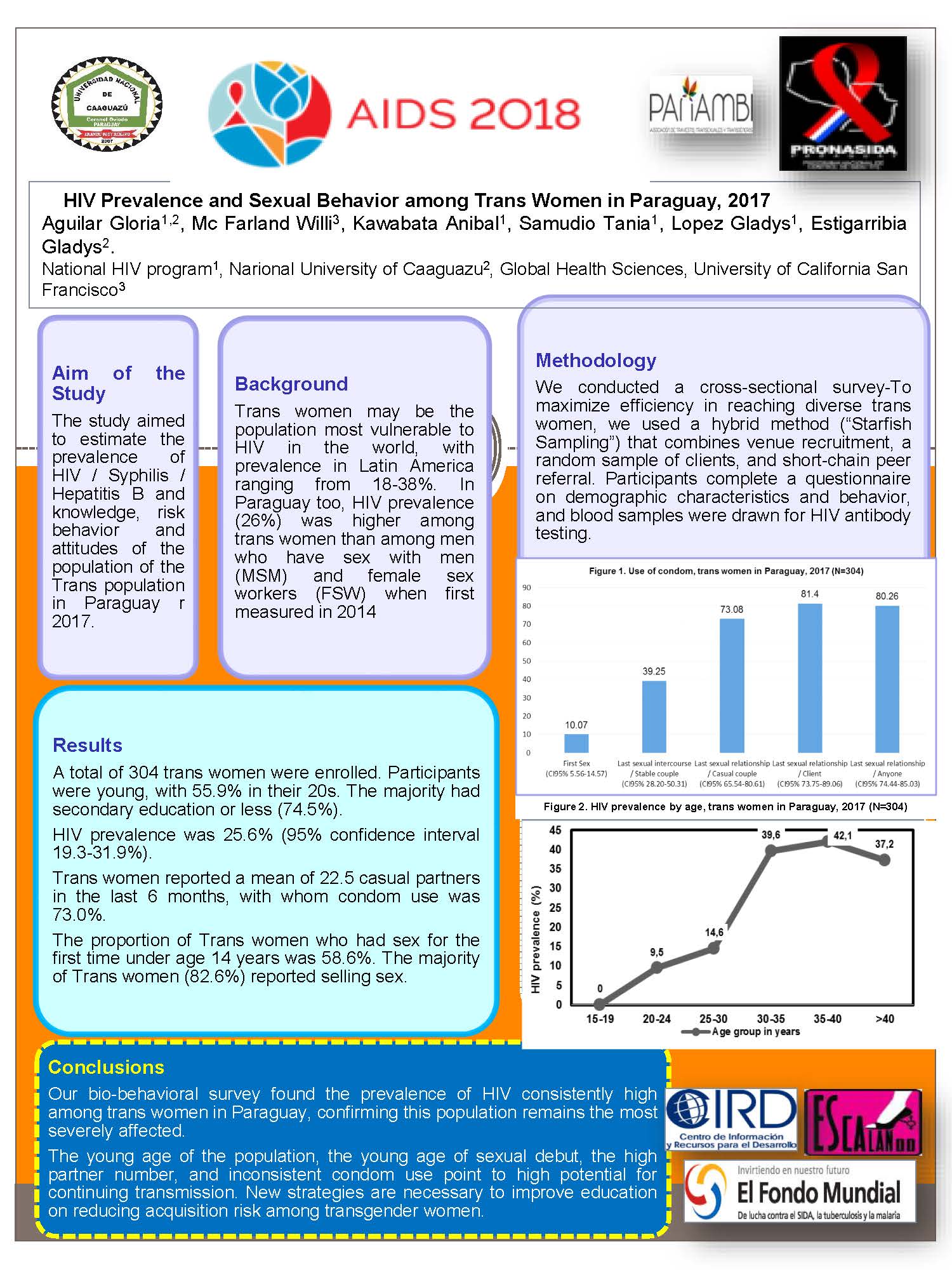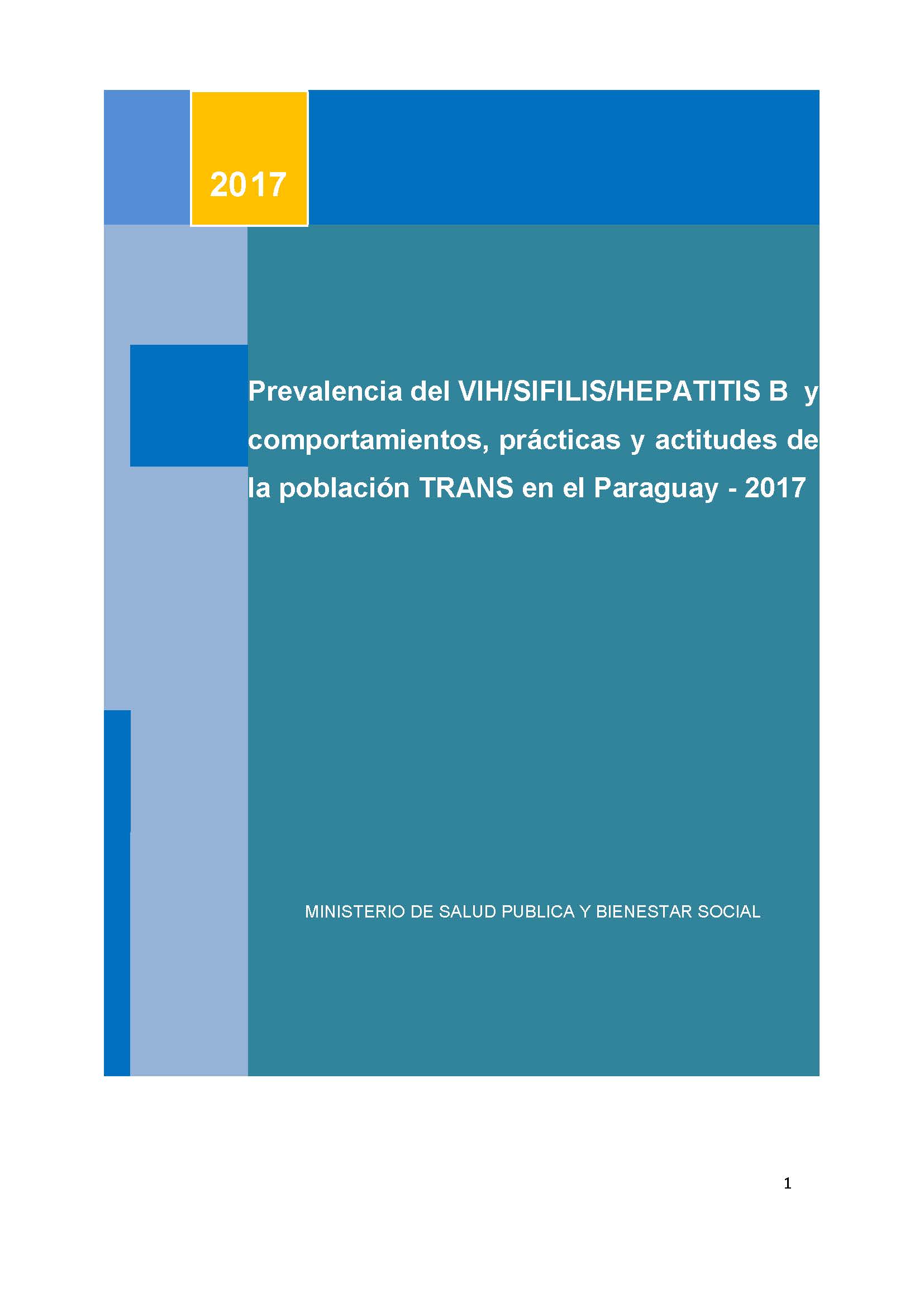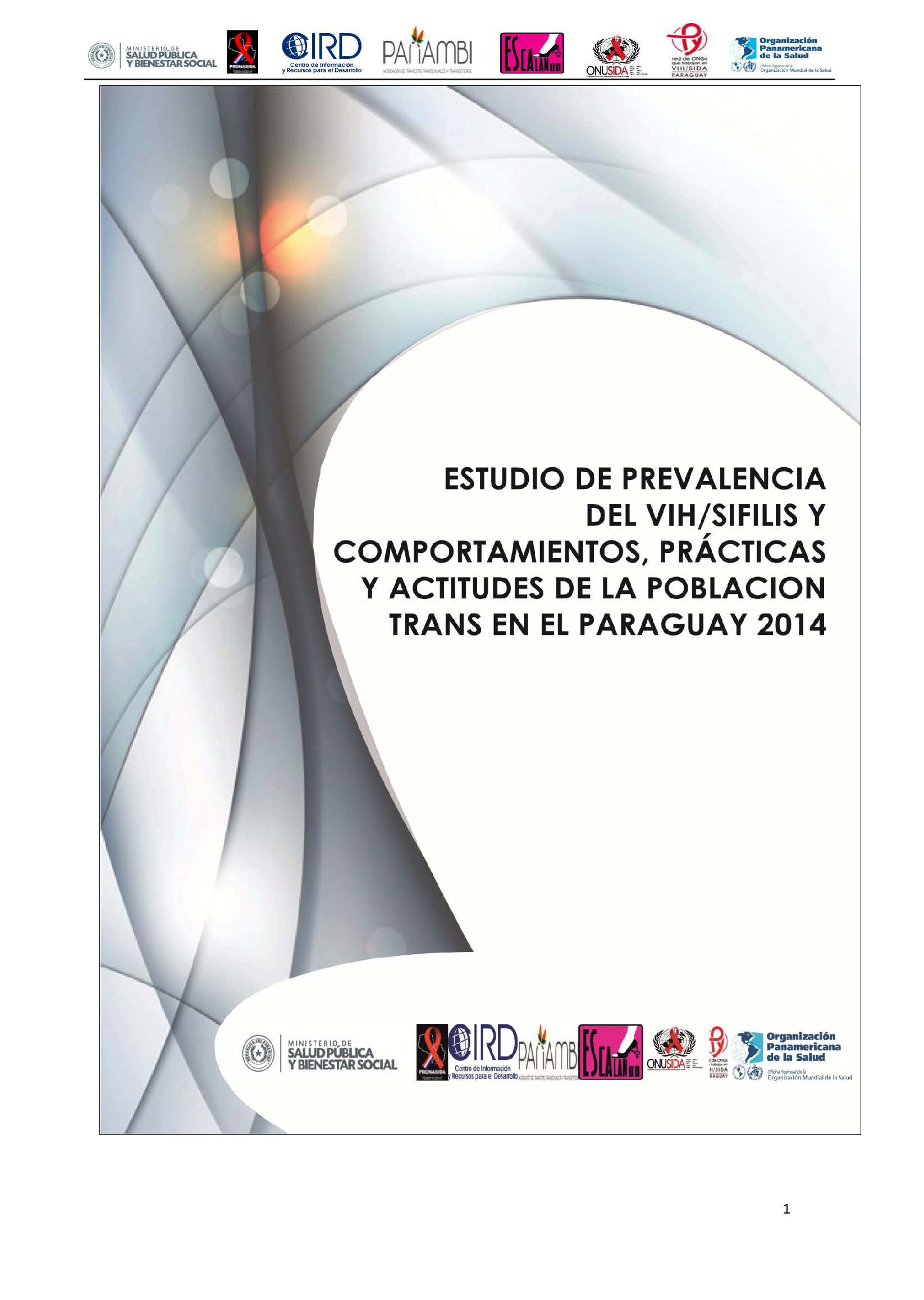Resumen
Background: Trans women may be the population most vulnerable to HIV in the world, with prevalence in Latin America ranging from 18-38%. In Paraguay too, HIV prevalence (26%) was higher among trans women than among men who have sex with men (MSM) and female sex workers (FSW) when first measured in 2014. A high level of vigilance is warranted for trans women to track HIV and behavioral causes of infection for this marginalized and disproportionately affected population who have been left out of previous surveillance data. We therefore conducted a bio-behavioral survey among trans women in Paraguay in 2017, incorporating novel methods in the design to increase inclusion.
Methods: We conducted a cross-sectional survey with transgender women in Paraguay in 2017. To maximize efficiency in reaching diverse trans women, we used a hybrid method (“Starfish Sampling”) that combines venue recruitment, a random sample of clients, and short-chain peer referral. The study began with mapping places of sex work and where trans women congregate. A random selection of trans women clients was also conducted. Further, trans women referred peers to the study. Participants complete a questionnaire on demographic characteristics and behavior, and blood samples were drawn for HIV antibody testing. Participants provided written informed consent.
Results: A total of 304 trans women were enrolled. Participants were young, with 55.9% in their 20s. The majority had secondary education or less (74.5%). HIV prevalence was 25.6% (95% confidence interval 19.3-31.9%). Trans women reported a mean of 22.5 casual partners in the last 6 months, with whom condom use was 73.0%.The proportion of trans women who had sex for the first time under age 14 years was 58.6%. The majority of trans women (82.6%) reported selling sex.
Conclusions: Our bio-behavioral survey found the prevalence of HIV consistently high among trans women in Paraguay, confirming this population remains the most severely affected. The young age of the population, the young age of sexual debut, the high partner number, and inconsistent condom use point to high potential for continuing transmission. New strategies are necessary to improve education on reducing acquisition risk among transgender women.






